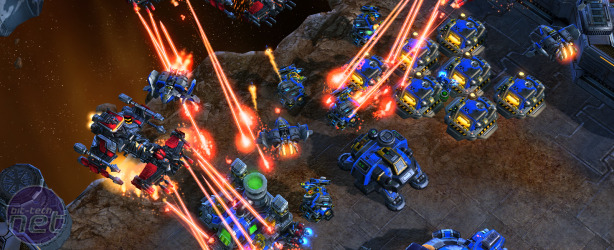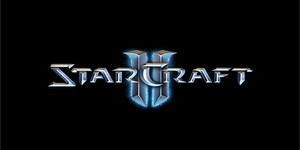
Dedication, That's What You Need
You don’t achieve such consistent results without dedication, but the effort undertaken by the top competitors is unlike anything else in video games.
When players in Korea sign on the dotted line, they are committing to a gruelling training regime. Groups like oGs have specially designed team houses. Every morning, players rise from their bunks and head straight to a bank of computers, where they will train for eight hours a day, before returning to bed. Team managers cater for their basic needs, so that their brains can remain fully focussed on devising game-breaking strategies.

The result of this ceaseless training is a kind of mastery that barely resembles casual gaming. Watching a Korean pro-gamer in his pomp can be mesmerising. Fingers dance around the keyboard with frenetic urgency, while the mouse-hand clicks impossibly fast. The onscreen action remains all but incomprehensible, jumping from image to image in a split second.
The idea that anyone would submit themselves to such rigour for a video game is alien to many people, but when you stand back and look at the cultural context, the motivations become clear. In Korea, being good at Starcraft is not only financially rewarding, it’s cool. If you’re talented enough, you can go on TV and wave at your mother. Kids will talk about you in the playground and teenagers will practice day and night to become you.
Into The West
Back here in the West, where civilisation has not yet reached such a delightful zenith, there are still ways for us to dip our toes into this universe. If you hand GOMTV a bundle of cash, they’ll provide you with live streams of every GSL match, complete with English commentary. The USA has also made its own attempt at hosting a professional Starcraft league. Crossover success has so far eluded all attempts at serious pro gaming in the States, but the first season of the MLG has emerged moderately unscathed.
Europe also has its own scene, with the UK providing a healthy contingent of up and comers. Organised play in this country is likely to be found among the folds of larger e-sports events, such as those run by the Electronic Sports League. Arsenal’s Emirates Stadium recently hosted the European Gaming League’s fourth festival, which included Starcraft II among its portfolio. The event was won by a member of Team Dignitas, who is among the few British teams with some international clout. None of these endeavours come close to the pomp and purse of the GSL, but afford anyone with dreams of Korean success tangible stepping stones.
For the chronically underskilled, there are even communal ways to watch the best players go at it. Barcraft events have made several successful appearances in British pubs over the last year, allowing avowed nerds to huddle together, braying and whooping like football louts, while Terran and Protoss duke it out halfway across the world.
YouTube is also a treasure trove of content for enthusiastic fans. Amateur casters like Day[9], HuskyStarcraft, and HDstarcraft have an unbounded enthusiasm for the game and more than a few things to teach players with dreams of making it in the GSL.

The Best Spectator Game?
All of this is testament to Starcraft’s status as the finest spectator video game ever created. Even for cosmically unskilled viewers, watching Lee Jae-Dong execute a Zerg rush is exhilarating. Spend more than a few minutes in the company a rabid fan or glued to a well-commentated game and you’ll soon understand how a single video game was powerful enough to enrapture an entire nation.
This is the world of professional Starcraft. A corner of the globe where the nerds have usurped the jocks to become the premier sporting superstars.
You don’t achieve such consistent results without dedication, but the effort undertaken by the top competitors is unlike anything else in video games.
When players in Korea sign on the dotted line, they are committing to a gruelling training regime. Groups like oGs have specially designed team houses. Every morning, players rise from their bunks and head straight to a bank of computers, where they will train for eight hours a day, before returning to bed. Team managers cater for their basic needs, so that their brains can remain fully focussed on devising game-breaking strategies.

Eight hours a day of solid training. Reckon you could do it?
The result of this ceaseless training is a kind of mastery that barely resembles casual gaming. Watching a Korean pro-gamer in his pomp can be mesmerising. Fingers dance around the keyboard with frenetic urgency, while the mouse-hand clicks impossibly fast. The onscreen action remains all but incomprehensible, jumping from image to image in a split second.
The idea that anyone would submit themselves to such rigour for a video game is alien to many people, but when you stand back and look at the cultural context, the motivations become clear. In Korea, being good at Starcraft is not only financially rewarding, it’s cool. If you’re talented enough, you can go on TV and wave at your mother. Kids will talk about you in the playground and teenagers will practice day and night to become you.
Into The West
Back here in the West, where civilisation has not yet reached such a delightful zenith, there are still ways for us to dip our toes into this universe. If you hand GOMTV a bundle of cash, they’ll provide you with live streams of every GSL match, complete with English commentary. The USA has also made its own attempt at hosting a professional Starcraft league. Crossover success has so far eluded all attempts at serious pro gaming in the States, but the first season of the MLG has emerged moderately unscathed.
Europe also has its own scene, with the UK providing a healthy contingent of up and comers. Organised play in this country is likely to be found among the folds of larger e-sports events, such as those run by the Electronic Sports League. Arsenal’s Emirates Stadium recently hosted the European Gaming League’s fourth festival, which included Starcraft II among its portfolio. The event was won by a member of Team Dignitas, who is among the few British teams with some international clout. None of these endeavours come close to the pomp and purse of the GSL, but afford anyone with dreams of Korean success tangible stepping stones.
For the chronically underskilled, there are even communal ways to watch the best players go at it. Barcraft events have made several successful appearances in British pubs over the last year, allowing avowed nerds to huddle together, braying and whooping like football louts, while Terran and Protoss duke it out halfway across the world.
YouTube is also a treasure trove of content for enthusiastic fans. Amateur casters like Day[9], HuskyStarcraft, and HDstarcraft have an unbounded enthusiasm for the game and more than a few things to teach players with dreams of making it in the GSL.

Is there any game as good to watch as Starcraft and Starcraft II?
The Best Spectator Game?
All of this is testament to Starcraft’s status as the finest spectator video game ever created. Even for cosmically unskilled viewers, watching Lee Jae-Dong execute a Zerg rush is exhilarating. Spend more than a few minutes in the company a rabid fan or glued to a well-commentated game and you’ll soon understand how a single video game was powerful enough to enrapture an entire nation.
This is the world of professional Starcraft. A corner of the globe where the nerds have usurped the jocks to become the premier sporting superstars.

MSI MPG Velox 100R Chassis Review
October 14 2021 | 15:04









Want to comment? Please log in.